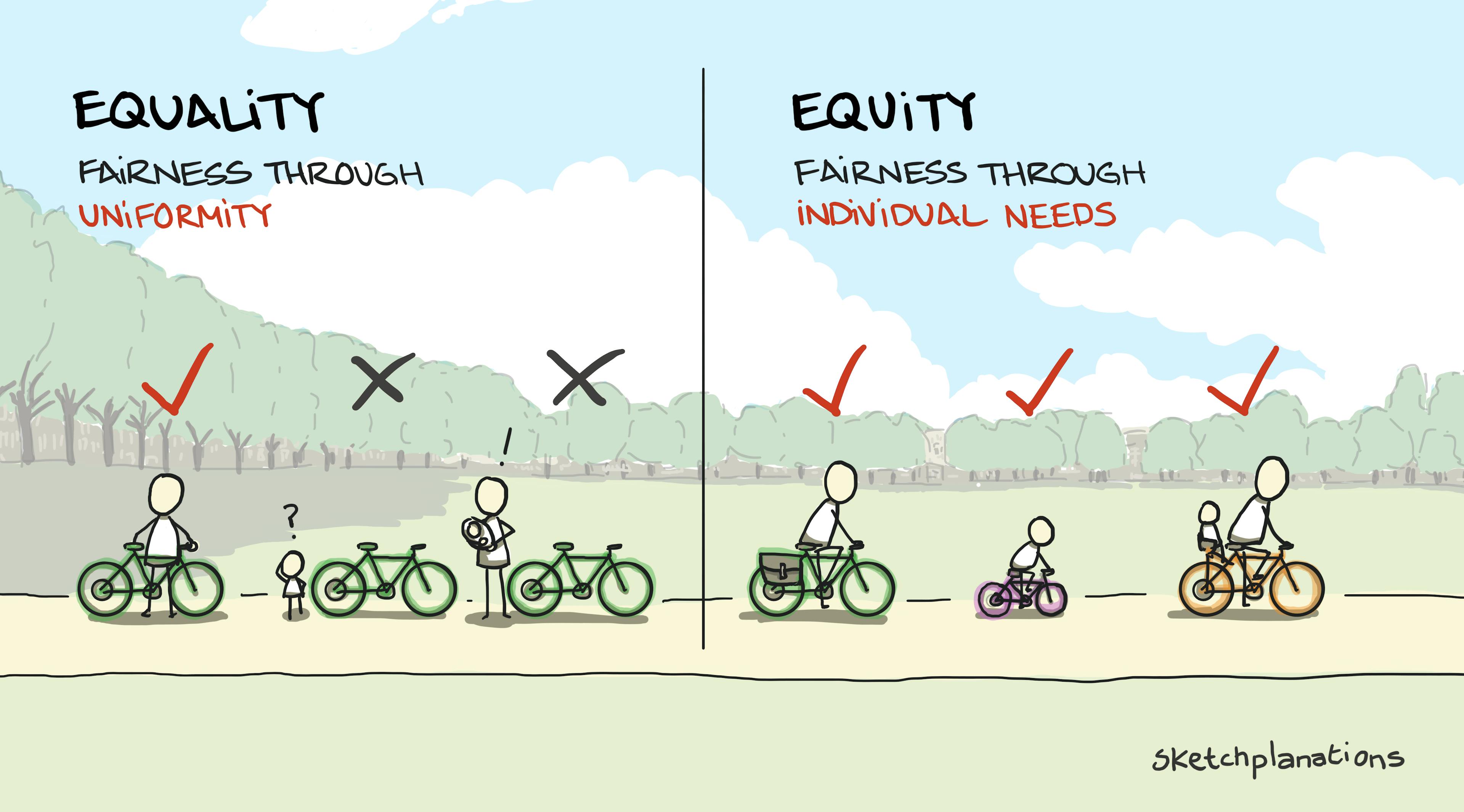Equality and equity

- Prints
- Copied!
👇 Get new sketches each week
Equality and equity are two important ideas that help us understand how to make things fair for everyone. Here's one way that helps me think about the difference between equity and equality:
Equality is fairness through uniformity, and equity is fairness through a recognition of individual needs.
If everyone gets the same—equality—this is fairer than some people getting something and others nothing. However, if a group were to go bike riding, as in the sketch, if everyone had the same bike, then it might work well for one person but not fit at all for a child or a shorter person. And if you had extra gear, young children to handle, or a disability, getting the same bike might not work at all.
In contrast, equity considers each person's individual needs to give everyone the same opportunity. Since getting the same bike doesn't meet everyone's needs, this might involve getting a bike that is the right height, or has a child seat to allow a parent and child to ride together, or other adaptations to accommodate someone with a disability. This way, everyone can ride comfortably and safely. Equity is about understanding that everyone has different needs and making sure those needs are met so that everyone has a fair chance to succeed.
Thinking about it this way helped me understand the difference between equality and equity, two concepts I had never clearly distinguished.
By focusing on equity, we can ensure that everyone has the support they need to do their best, even if it means giving different kinds of help to different people.
I am self-educated in this and don't consider myself an expert, so I'd be happy to receive guidance or links to articles for further education if you have them.
Also see: the curb-cut effect, one-size-fits-men, how to draw a bike

